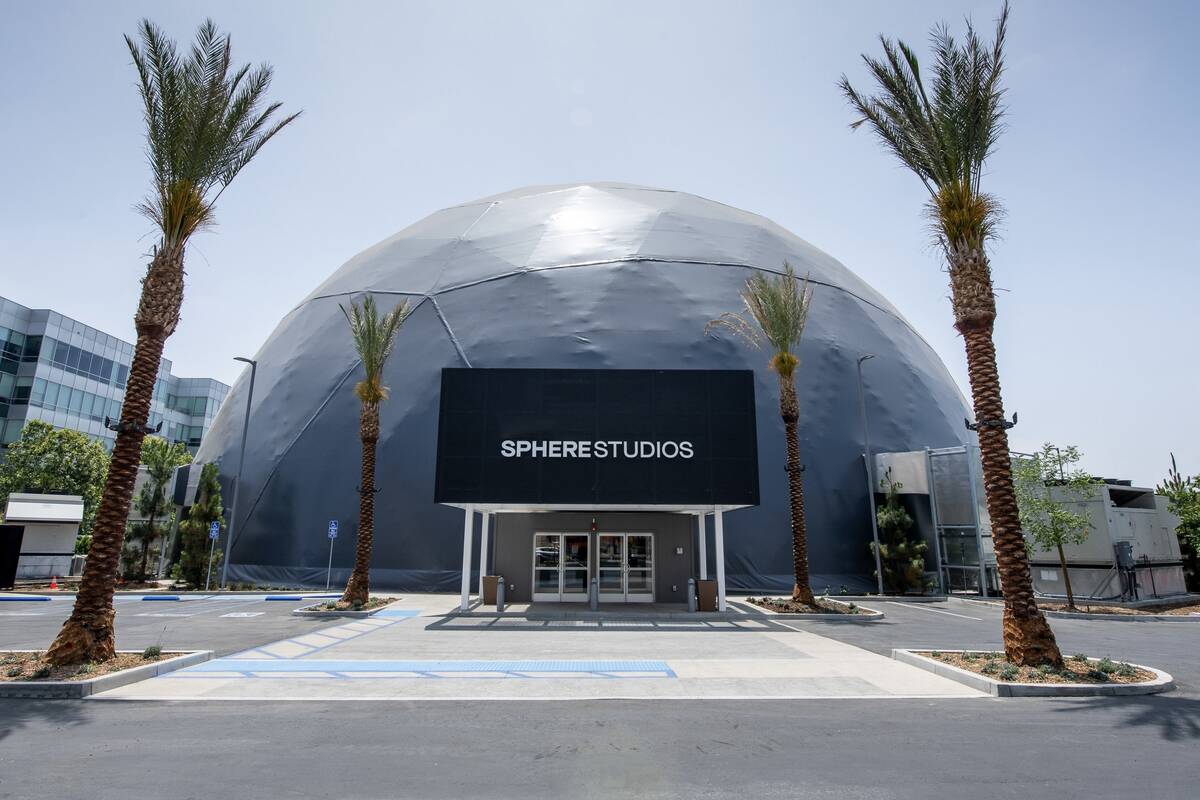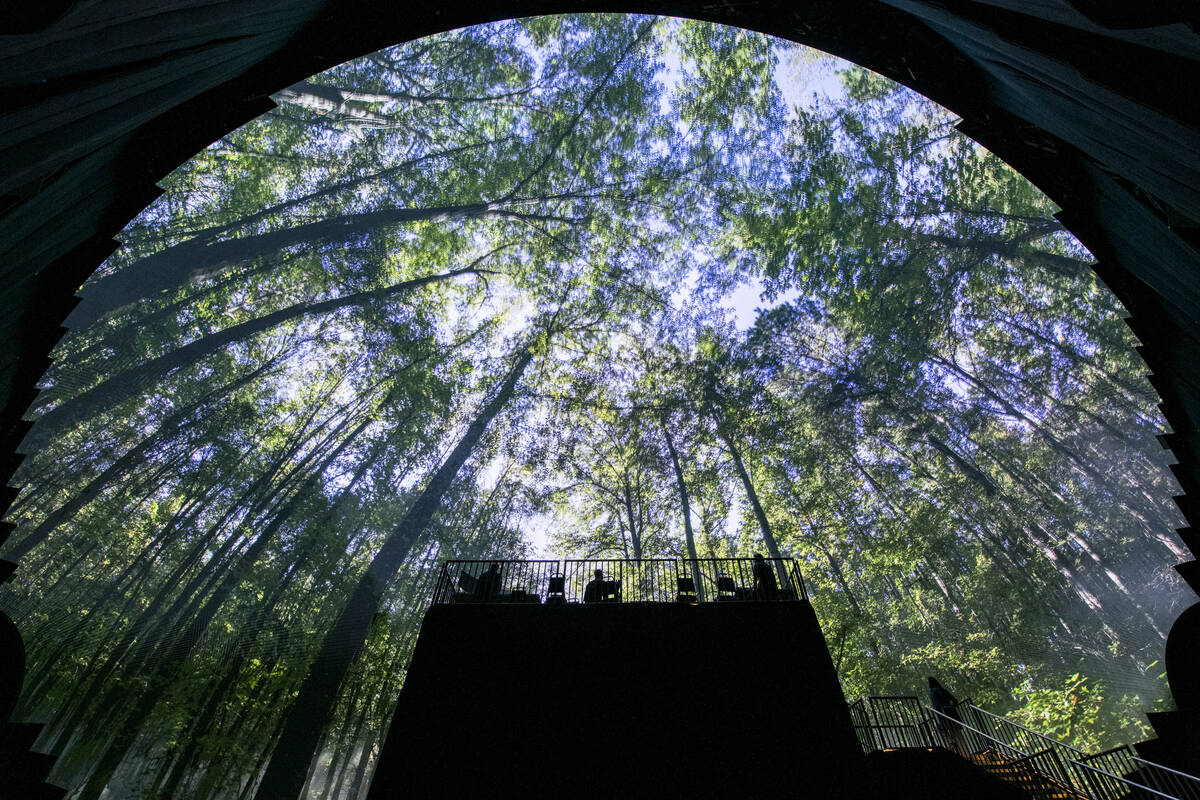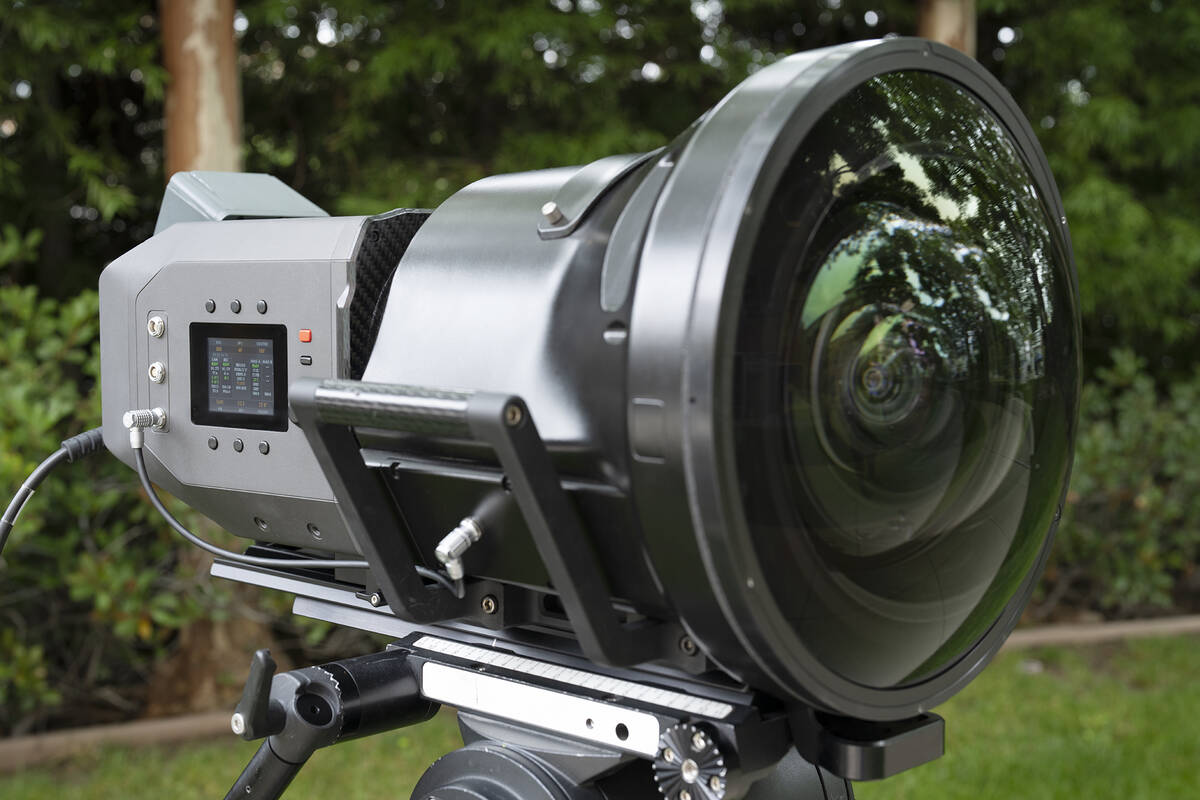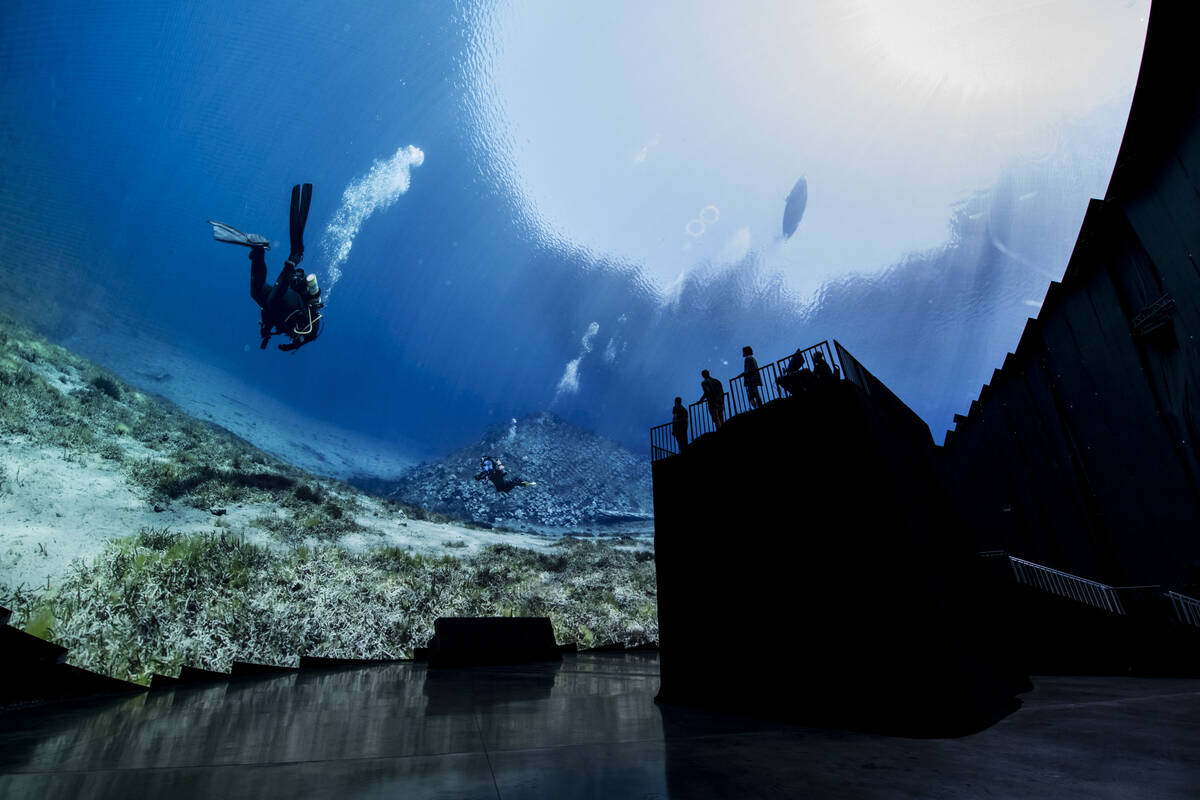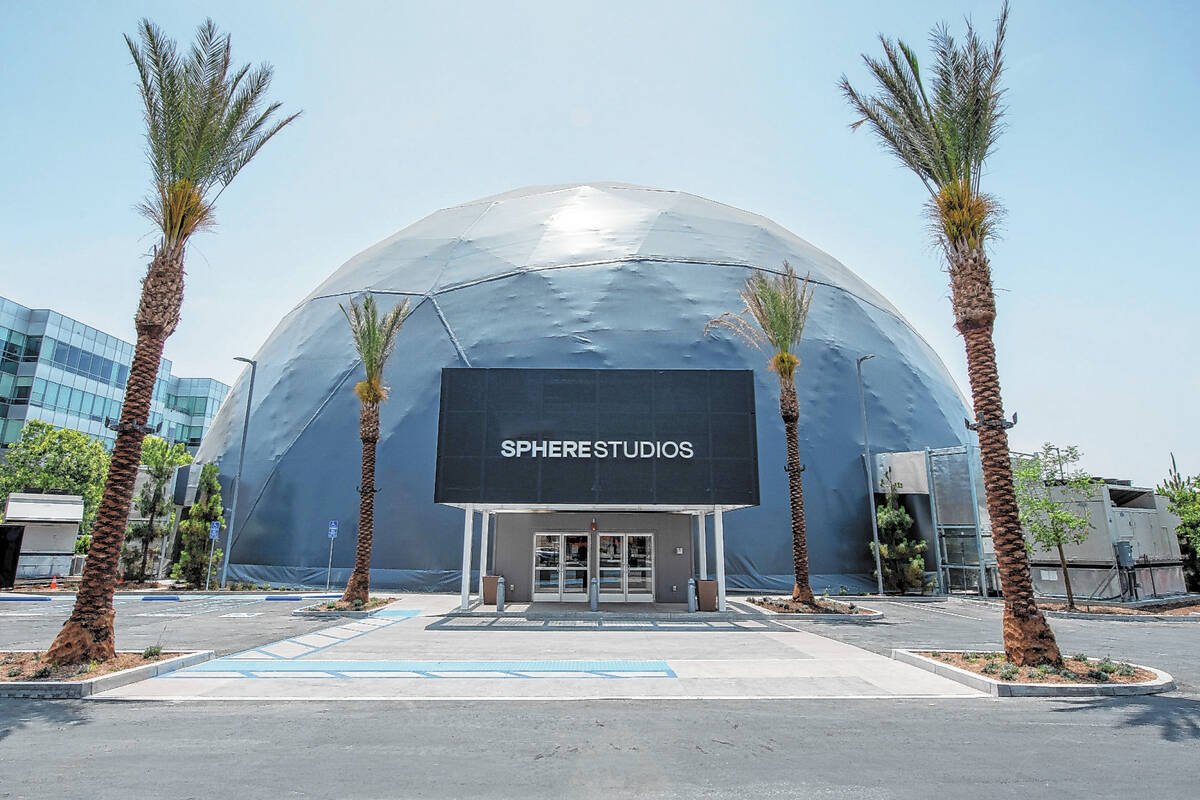MSG Sphere’s little cousin is a testing ground for feature films
BURBANK, Calif. — While not as imposing as its bigger cousin on the Las Vegas Strip, Big Dome makes quite an impression in this office park near Hollywood Burbank Airport.
The 28,000-square-foot, 100-foot-high custom geodesic dome is a quarter of the size of the MSG Sphere at The Venetian and has a scaled-down version of the Sphere’s nearly 4-acre wraparound high-resolution LED screen.
Unlike the Las Vegas Sphere, where there are 17,600 seats and enough standing room for a crowd of 20,000, Big Dome has just a few rows of normal theater seats plopped atop a two-story platform. That’s good enough for Sphere Studio crews to preview the creative content they hope will dazzle Las Vegas audiences when the $2.3 billion Sphere opens its doors in the fall.
The Sphere will have its first event Sept. 29 when Irish rock band U2 takes the stage. The first feature film presentation, “Postcard from Earth,” makes its debut Oct. 6.
What will people see when they attend a “Postcard from Earth” presentation?
That’s top secret.
No cameras
All around Big Dome are signs warning that no cameras are allowed and posting anything on social media is forbidden. That’s somewhat ironic in that once the MSG Sphere opens, operators are hoping that millions of visitors will take pictures of the video content produced on the exterior of the building and send it far and wide.
While no images from “Postcard” have been publicly distributed by Sphere Entertainment Co., the parent company of the studio, executives have offered a few clues. Among them are part of the story of the development of a new camera system — considered the most technologically advanced camera ever produced.
The new system is known as “Big Sky” and, with its SphereLab processing system, can capture images with a single unit tethered to a recorder.
According to Big Sky inventor Deanan DaSilva, the lead architect of Big Sky at Sphere Studios, it took 18 months for the Sphere team to develop the camera from conception to working equipment.
‘Built from scratch’
“Everything was built from scratch with no off-the-shelf components,” DaSilva said in a recent tour and demonstration for the Review-Journal. “Everything was custom built, including the SphereLab image-processing software. We have custom lenses, the sharpest cinema lenses ever created. It feels like you’re looking through a window.”
Studio crewmembers already have named one of the Big Sky cameras “Eyegore,” a nod to the Mel Brooks comedy “Young Frankenstein” character portrayed by Marty Feldman.
Big Sky replaces the Array, a collection of 11 off-the-shelf high-resolution cameras clustered together on one platform with lenses pointing in multiple directions. Images captured with the Array were processed and digitally stitched together, eliminating overlapping footage.
“It was challenging to film with the Array because of its size and bulk,” DaSilva said. “When we experienced those challenges, we realized we had to make our own (system).”
Studio technicians joked that the Array could now be a museum piece since Big Sky has replaced it. The new system has a camera head with multiple types of lenses on one end and a recording device on the other, linked together with fiber-optic cabling. In early use, crews have successfully used cabling up to 1 kilometer long and because the camera can be controlled from either end, with proper planning, a camera could be suspended from the top of a crane or submerged underwater from a boat.
Sphere technicians also have devised headset goggles to preview what screen images would look like in the Sphere venue.
“You can look around the venue, but also see what you’re shooting in real time, so you can get a sense for how to frame, what things look like and visualize what you’re shooting,” DaSilva said. “You’ll be able to see it pretty obviously and reframe in the field.”
Staggering data amounts
Because of the high resolution and the large format, the amount of data processed in any shoot is staggering.
The Big Sky system can capture content up to 120 frames per second in an 18K square format and higher speed frame rates at lower resolutions. Capturing media at that scale requires unprecedented processing power and storage solutions.
At full resolution, Big Sky’s media recorder can absorb 60 frames per second, uncompressed footage at 30 gigabytes per second, or 120 frames per second at 50 gigabytes per second to its custom 32-terabyte media magazines, facilitating an effective process for capturing ultra-high-resolution immersive content. At 30 gigabytes per second, that’s roughly filling up eight Blu-ray discs in one second.
The media recorder is capable of handling 600 gigabits per second of network connectivity, as well as built-in media duplication, to accelerate and simplify on-set and postproduction workflows.
What all that resolution means is that even the simplest of experiences — meandering through a forest, scuba diving in an open ocean or seeing a steam locomotive amble down a track — can take your breath away.
The Array was used to capture all of those images as well as Petra, the archaeological site in southern Jordan made famous by “Indiana Jones and the Last Crusade,” and images of mermaids in a pool for a demonstration at Big Dome — but those aren’t going to be used for “Postcard from Earth.” Those images instead are designed to show some of the capabilities of the big screens at Sphere.
Other capabilities
Add in the sound and fourth-dimension component capabilities of the Sphere and studio officials believe they’ll have a compelling entertainment product to present.
Big Dome doesn’t have the haptic seat features that 10,000 seats at the Sphere will have. Depending on what a filmmaker wants to present, guests at the Sphere will be able to feel sounds with equal intensity regardless of where they’re seated in the building.
While the Big Dome demonstration system has 12 sound cabinets, the MSG Sphere has 1,800, producing 160,000 channels of audio. It’ll also have 18 atmospheric effects system units to simulate scents, wind, temperature and humidity.
Also under Big Dome is a programmable model of the MSG Sphere showing all the capabilities for imagery on the building’s exosphere. Company officials have made sample advertising programs, indicating they’re looking at potential revenue from sponsors.
The company also has an alliance with the Formula 1 Las Vegas Grand Prix, so racing-car visuals are a likely theme in November.
Giant snow globe
One clever video demonstrated at the Big Dome model showed the Sphere as a snow globe turned upside down by some hidden force and imagery of a blizzard on a castle scene.
Studio officials hinted they like to use the Big Sky camera system underwater, and it recently swam with sharks in the Caribbean. It’s already been used on multiple continents at various unidentified locations and the company has announced that a Big Sky camera will be headed to the International Space Station, probably next year.
Located on the edge of Hollywood, Sphere Studio is standing by to hear the ideas of filmmakers, directors and producers who want to present a big-screen project that uses all of the Sphere’s technological capabilities. No projects beyond “Postcard” have been announced.
But the company is prepared to take the next step in Vegas entertainment with what is expected to be a groundbreaking new art form.
Contact Richard N. Velotta at rvelotta@reviewjournal.com or 702-477-3893. Follow @RickVelotta on Twitter.



